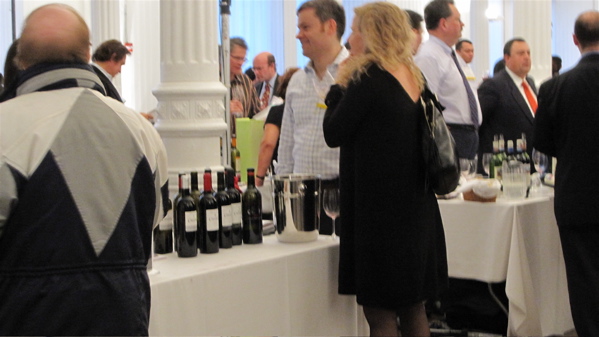When I heard there was a tasting of more than 400 wines from
90 Ribero del Duero wineries at New York’s Puck Building, I was really excited.
Though Jay and I have been wine tasting in Spain twice now (most recently last
summer), we’ve concentrated our visits in Rioja with brief excursions to La
Mancha and Jerez, but haven’t yet made it to the Ribera region, about a two-hour drive north of Madrid.
In Ribera, the main grape varietal is tempranillo
(sometimes called “tinto fino” or “tinta del pais”
locally), which in this region produces full-bodied red wines that usually have low acidity,
high tannins and flavors of black plum and cherry.
My friend Jen and I tasted many, many wines at this event
(with a couple of breaks for bread and cheese) and though most had some of the
traditional Ribera characteristics, a few were totally different than anything
else; for instance, one wine had tastes of port and bandaids (that would be the
2006 Aster Finca El Otero – though unique, not necessarily my favorite because of its somewhat cloying flavors).
That said, some of the wines I liked best were:
- the 2005 Pesquera Riserva from Alejandro Fernandez Tinto
Pesquera, with red cherry and animal notes;
- the 2008 Abadia la Arroyada Joven from Bodegas Abadia
la Arroyada, unoaked and reminiscent of a Beaujolais with lots of strawberry
flavor, made by a family winery founded in 2002 that only produces 15,000
cases a year;
- the 2004 Valderiz Tomas Esteban from Bodegas y Vinedos
Valderiz, all organic, smooth and rich with deep chocolate and cherry flavors;
- the 2004 Recorba Reserva, with tastes of dark
chocolate and red cherry.
Next time we’re in Spain (and there will definitely be a
next time!), we’ll make a special effort to visit some of the wineries in this
region – and maybe in Priorat, too. So many places to go and wines to drink…


